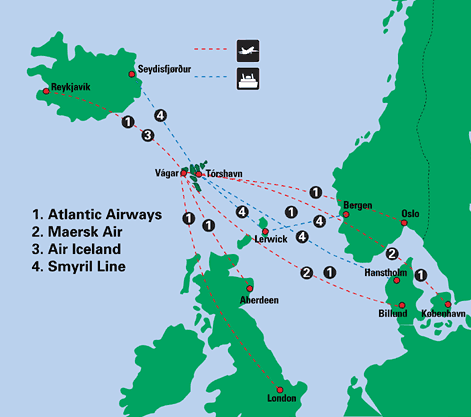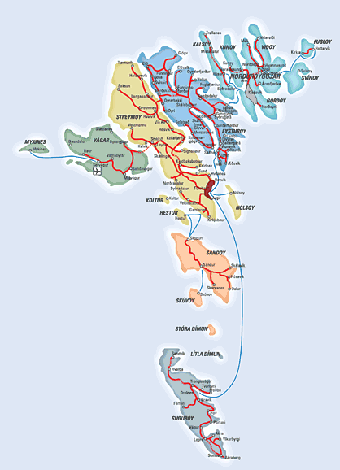TONIGHT WE GO LIVE FROM FAROE ISLANDS TO 38 COUNTRIES ACROSS EUROPE
JournalPublish date: 03/07/2006
 Dear Friends & Partners
Dear Friends & Partners
In just a few hours our meetings will begin here in the Faroe Islands. This meeting will be filmed and broadcast live into 38 countries across Europe and Scandinavia from the Faroe Islands. Our dear friend, Jan Hanvold, who heads up Visjon Norge, has brought his truck and satellite equipment to beam the meetings up live to
many different networks across Scandinavia and Europe. We believe that this is a historic moment. Be in prayer with us for God to do a mighty work in people's lives. This network is based in Norway and has a potential of reaching 4 million homes in Scandinavia alone. You can visit their website www.visjonnorge.com for more information on the network. The church building we are using is in the center of the FaroeIslands and has just been built. The church is called Kelder which means River. Isn't that awesome?
This is a fulfulment of prophesy, as the Gospel is being proclaimed in the islands of the sea! For more information about the Faroe Islands go to www.faroeislands.com.
FACTS ABOUT THE FAROES
 Location and size :
Location and size :
Situated in the heart of the Gulf Stream in the North Atlantic at 62°00'N, the Faroe Islands lie northwest of Scotland and halfway between Iceland and Norway. The archipelago is composed of 18 islands covering 1399 km2 (545.3 sq.miles) and is 113 km (70 miles) long and 75 km (47 miles) wide, roughly in the shape of an arrowhead. There are 1100 km (687 miles) of coastline and at no time is one more than 5 km (3 miles) away from the ocean. The highest mountain is 882 m (2883 ft) above sea level and the average height above sea level for the country is 300 m (982 ft).
Climate:
The weather is maritime and quite changeable, from moments of brilliant sunshine to misty hill fog, to showers. The Gulf Stream encircling the islands tempers the climate. The harbours never freeze and the temperature in winter time is very moderate considering the high latitude. Snowfall occurs, but is shortlived. The average temperature ranges from 3°C in winter to 11°C in the summer. In sheltered areas, the temperature can be much higher, but the air is always fresh and clean no matter what the season.
Population:
The population is 48,407 (1st June 2004). About 18,800 people live in the metropolitan area which comprises Tףrshavn, Hoyvםk, Argir, Kaldbak and Kollafjרrנur, while about 5,000 people live in Klaksvםk, the second largest town in the Faroe Islands.
Form of Government:
Since 1948, the Faroe Islands have been a selfgoverning region of the Kingdom of Denmark. It has its own parliament and its own flag. It is not, however, a member of the European Union and all trade is governed by special treaties.
Languages Spoken:
Faroese is the national language and is rooted in Old Norse. Nordic languages are readily understood by most Faroese, and English is also widely spoken, especially among the younger people.
Religion:
Religion plays an important part in Faroese culture and over 80% of the population belong to the established church, the EvangelicalLutheran. 10% of the population belong to the Christian Brethren (Plymouth Brethren).
Industry:
The fishing industry is the most important source of income for the Faroes. Fish products account for over 97% of the export volume. Tourism is the second largest industry, followed by woollen and other manufactured products.
Trust that this information will help you as you pray for us. Watch tonight for the first update from the Faroe Islands.
Blessings
Drs. Rodney & Adonica and the Crusade Team







